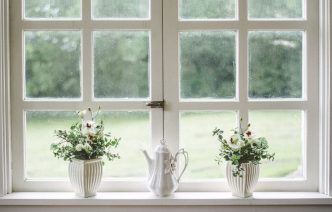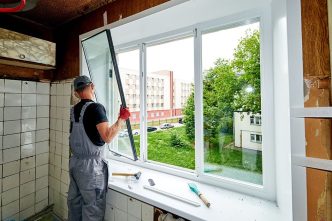Glossary of Glass Making Terms
Today, it is almost impossible to go through the day without seeing various types of glass objects. Many everyday objects, from drinking glasses to computer screens to windows, are made of glass. Most people see glass and never put much thought into how the glass came to be in their windows. However, some people know exactly what it takes to make glass. These people know how to make glass and they also know each complicated step of turning this glass into something both useful and beautiful. These people are known as glassmakers. Some glassmakers make glass for artistic purposes while others make glass that is purely functional. Regardless of which end result the glassmakers desire, they make use of the same unique, technical vocabulary. Some of the most common glassmaking terms include the following:
Abrasion- A technique that involves scraping or wearing down glass through the use of a wheel or other tools containing gritty material. This technique is often used to create shallow decorative areas on the glass.
Acid Etching– A process that uses hydrofluoric acid to create a wax like substance that covers glass. Glassmakers then scratch, or etch, into the waxy substance to create a design.
Acid Polishing– Similar to acid etching, this technique uses hydrofluoric acid along with other acids (usually sulfuric) to cover the surface of the glass. The result of the acids on the glass is a polished looking finish.
Acid Stamping– This technique is performed almost exactly the way acid etching is performed. Instead of etching a design into the glass, however, a rubber stamp is used to mark a logo or trademark onto the surface of the glass.
Alkali– A vital ingredient used to create glass. It is a salt that contains mostly sodium carbonate or potassium carbonate. It is used to reduce the point at which other ingredients, such as silica, melt.
Ancient Glass– This is a simple way of saying “all glass that was created prior to the rise of the Roman Empire.”
Annealing– A process in which completed glass projects are cooled very slowly in a furnace. Glass that cools too quickly after being heated can easily break.
Art Glass– A category of decorative glass that contains various colors and textures, created any time after the mid 1800s.
At-the-Flame– A term used by glassmakers to communicate that they are currently using lampworking techniques.
Bar– One piece of glass created with the use of fused rods. Bars are often used when creating mosaic glass.
Batch– All ingredients needed to form glass, mixed and melted together in one container.
Battledore– A square-shaped wooden paddle with a handle, used to smooth out the bottoms of glass projects.
Bits- A term used to describe small pieces of molten glass that are removed from furnaces.
Blank– A term that refers to glass projects that are cooled, but still need to be shaped or decorated.
Blowpipe– A tool used in glassblowing. The tool is around five feet long and is made of steel or iron. The tube features a mouthpiece which enables glass workers to blow into the tube and inflate the molten glass that is secured on the other side of the tube.
Bubble– In glassmaking, this term refers to air that has become entrapped inside of the glass during the process of heating or cooling.
Came– Metal, usually lead, that is used in glassmaking to combine separate portions of glass panes into one window.
Casing– The process in which glass is laid over a separate piece of glass that is a different color.
Casting– A term that refers to any one of multiple techniques used to form molten glass into a particular desired shape through the use of a mold.
Decolorizer– An ingredient that is added into glass to rid the final product of brown or green colors that may result from impurities.
Drilling– A process in which a tool is used to produce a hole within the glass.
Fining– A process that involves heating the glass to a higher temperature than required to melt, to eliminate bubbles within the molten glass.
Finishing– A term that refers to the addition of final details when shaping molten glass into a desired form before it cools.
Firing– A process where all ingredients that are needed to create glass are combined and heated to create molten glass. This process can also refer to reheating glass that has been finished previously to alter the shape of the glass.
Founding– A term that refers to the first stage of melting ingredients together to create glass. Generally, founding occurs when the ingredients within a batch reach somewhere around 2450 degrees Fahrenheit.
Furnace– A tool used by glassmakers that is very similar to an oven, although it reaches much higher temperatures to ensure that glass reaches its very high melting point.
Gaffer– A skilled person, much like a supervisor in traditional businesses, that is in charge of others, or their own area within a glassworking facility.
Glass– A hard yet fragile material created melting combined ingredients, such as sand and lime, and allowing them to cool.
Glassblowing– A technique used by glassworkers, with the use of a blowpipe, to inflate and form hot glass into desired shapes and sizes.
Lampworking– A technique used by glassworkers that uses a flame to manipulate glass on a smaller scale than other techniques. This allows smaller glass projects to be more intricate.
Mold– A sturdy hollow tool, available in many shapes and sizes, that is used to manipulate molten glass. The molten glass takes on the shape of the mold as it cools.
Pane- A single piece of sheet glass, used for creating windows, that is flattened and glazed.
Polishing– A process that utilizes abrasive materials, in combination with hand tools or other equipment, to create a more uniform feel around rough edges.
Silica– The most commonly used ingredient in glassmaking, found in common beach sand.
Tank– Similar to a melting pot, it is used to hold and mix all of the ingredients that are needed to make glass.
| Wood Windows and Doors | Additional Window Options | Home Services |
|---|---|---|


